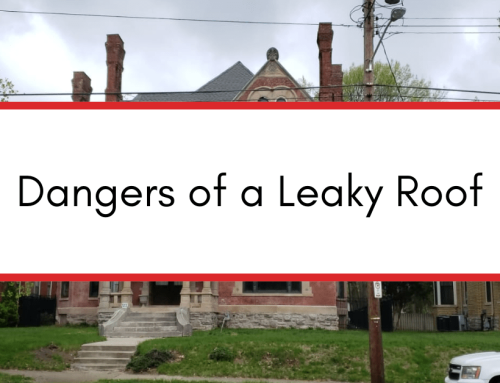A well-constructed roofing system is essential for the protection and longevity of any home or building. Understanding the basics of this complex structure is crucial in ensuring that your roof remains in excellent condition throughout its lifespan.
At AIC Roofing & Construction, we’ve helped thousands of homeowners understand their roofing system so they can make informed, confident decisions about their home. In this article, we will discuss the key components of a roofing system, explore the different roofing materials available, discuss the role of underlayment, highlight the significance of roof flashing, and emphasize the importance of proper ventilation through roof vents.
Understanding the Basics of Roofing Systems
A well-built roof is made up of various components that work together to provide protection against the elements. Each element has a specific function that contributes to the overall strength and durability of the roofing system. One of the key aspects of a well-constructed roof is its ability to withstand harsh weather conditions, such as heavy rain, snow, wind, and extreme temperatures.
Roofs are not just about the shingles and tiles that you can see; they are complex systems designed to keep your home safe and dry. A properly constructed roof is a combination of materials and design that work in harmony to provide shelter and protection. From the rafters and trusses to the underlayment and flashing, every part of the roof has a crucial role to play in keeping your home secure.
The Importance of a Well-Constructed Roof
A well-constructed roof plays a vital role in maintaining the structural integrity of a home or building. It prevents water leakage, protects against mold and mildew growth, and ensures energy efficiency. Therefore, investing in a sturdy roofing system is essential for the long-term health and safety of your property.
Furthermore, a well-built roof can enhance the curb appeal of your home and increase its value. Aesthetically pleasing roofing materials and a properly installed roof can significantly boost the overall look of your property, making it more attractive to potential buyers in the future.
Key Components of a Roofing System
Roofing systems comprise various components, each serving a specific purpose. The key components include the roof covering, roof structure, roof underlayment, roof flashing, and roof vents. Let’s explore each of these components in detail.
The roof covering, such as shingles, tiles, or metal panels, is the outermost layer of the roof that provides protection against the weather. The roof structure, including rafters and trusses, forms the framework that supports the roof covering and distributes its weight evenly. The roof underlayment is a water-resistant barrier installed beneath the roof covering to prevent water penetration and protect the roof deck. Other elements of your roofing system include:
The Role of Underlayment in Your Roof
Underlayment is a crucial component of a roofing system that provides an additional layer of protection against water infiltration. It acts as a barrier between the roof deck and the roof covering, helping to prevent leaks and prolong the lifespan of your roof. There are different types of underlayment materials to choose from, including asphalt-saturated felt and synthetic options like synthetic underlayment and rubberized asphalt.
When it comes to selecting the right underlayment for your roof, it’s essential to consider factors such as the climate in your area. For example, in regions with high humidity or heavy rainfall, a waterproof underlayment like synthetic or rubberized asphalt may be more suitable to provide enhanced protection against water intrusion. On the other hand, in arid climates, a breathable underlayment material may be preferred to allow moisture vapor to escape from the attic, preventing issues like mold and mildew.
Types of Underlayment
There are various types of underlayment available, each with its own unique properties and suitability for specific roofing applications. These include asphalt-saturated felt underlayment, synthetic underlayment, and rubberized asphalt underlayment. The choice of underlayment depends on factors such as climate, roof slope, and the selected roofing material.
Asphalt-saturated felt underlayment, also known as tar paper, has been a traditional choice for many years due to its affordability and effectiveness in providing a water-resistant barrier. Synthetic underlayment, made from materials like polyethylene or polypropylene, offers superior tear resistance and durability compared to felt underlayment. Rubberized asphalt underlayment combines the benefits of both asphalt and synthetic materials, providing excellent waterproofing properties and flexibility.
Functions of Roof Underlayment
Roof underlayment serves several essential functions in a roofing system. Firstly, it acts as a secondary barrier against water penetration, protecting the roof deck and the building interior from potential damage caused by leaks. Secondly, it helps to improve the roof’s overall thermal efficiency by providing an additional layer of insulation. Lastly, underlayment also acts as a temporary weather barrier during the roof installation process.
Additionally, underlayment plays a crucial role in enhancing the overall performance of the roof covering by providing a smooth surface for the proper installation of shingles or other roofing materials. It also helps to reduce the impact of external factors such as wind-driven rain or snow on the roof structure, ensuring long-term durability and weather resistance.
The Significance of Roof Flashing
Roof flashing plays a critical role in preventing water penetration at vulnerable areas of the roof, such as valleys, chimneys, skylights, and roof edges. It consists of metal or plastic strips that are installed to redirect water away from these areas, ensuring that no moisture infiltrates the roofing system. Without proper roof flashing, water can seep into the underlying materials, leading to leaks, mold growth, and structural damage.
Additionally, roof flashing serves as a barrier against not only water but also debris and pests. By sealing off entry points along the roofline, flashing helps prevent critters like rodents and insects from finding their way into your home. This added layer of protection contributes to the overall health and longevity of your roof and property.
What is Roof Flashing?
Roof flashing is a waterproofing technique used to seal joints, gaps, and transitions in the roofing system. It is typically made from durable materials like aluminum, copper, lead, or galvanized steel. Flashing is strategically placed in areas where water is likely to penetrate, ensuring that the roof remains watertight and protected.
Why Roof Flashing is Crucial
Properly installed roof flashing is crucial for maintaining the integrity of your roofing system. It prevents water from seeping into vulnerable areas, reducing the risk of leaks and subsequent water damage. Without appropriate flashing, water can infiltrate the roof structure, causing rot, decay, and compromising the overall strength of the roof. As a result, investing in high-quality flashing materials and professional installation is essential.
Moreover, roof flashing can enhance the aesthetic appeal of your property. When installed correctly, flashing can create clean lines and a polished finish along the roof’s edges and transitions. This attention to detail not only improves the overall look of your home but also adds to its curb appeal and resale value. Therefore, beyond its functional benefits, roof flashing can also contribute to the visual appeal of your property.
The Function of Roof Vents
Roof vents play a vital role in maintaining proper ventilation within your roofing system and the overall building. A well-ventilated roof allows for the exchange of air, reducing heat buildup, preventing moisture accumulation, and extending the lifespan of the roof. Different types of roof vents are available, each designed to accommodate various roof designs and ventilation requirements.
Importance of Proper Ventilation
Proper ventilation is critical for ensuring the longevity and performance of your roofing system. It helps to prevent excessive heat buildup in the attic, minimizing the risk of structural damage, and reducing energy consumption. Furthermore, adequate ventilation prevents the accumulation of moisture and condensation, preventing mold, mildew, and rot from forming in the roof structure.
Different Types of Roof Vents
There are several types of roof vents available, including ridge vents, soffit vents, gable vents, and turbine vents. Each type has its own unique features and benefits, ensuring effective ventilation for different roof configurations. It is essential to select the appropriate type and quantity of vents based on factors such as roof slope, climate, and attic size to achieve optimum airflow and ventilation.
In conclusion, a well-constructed roofing system consists of various components that work together to protect your building from the elements. Understanding the basics of roofing systems, exploring different roofing materials, recognizing the role of underlayment, appreciating the significance of roof flashing, and acknowledging the function of roof vents are all essential aspects of maintaining a durable and long-lasting roof. By investing in high-quality materials, professional installation, and regular maintenance, you can ensure the integrity and longevity of your roofing system for years to come.
Have You Had Your Roof Inspected Lately?
AIC Roofing and Construction is part of the elite 2% of roofers in North America to hold the GAF MasterElite Certification. We renew this certification every year as part of our commitment to excellence.
We are able to offer our customers peace of mind with industry leading warranties at no additional cost. Replacing your roof is expensive and can be a stressful process. But, it doesn’t have to be. Our expert staff are with you every step of the way – before, during and after. We offer options such as working with your homeowners insurance and flexible financing to ensure the right solution for your home is accessible.
Whether your home needs a repair or replacement, we’d love to give you our fair and honest assessment. We’ve served the Central Kentucky Community since 2003 and are proud of the stellar reputation we have earned. Contact us today to schedule your free roof inspection.
3-tab attics barns chimney choosing a contractor commercial cost curb appeal DIY estimate financing flashing flat roof GAF glossary gutter replacement gutters gutter size gutter system ice dams inspections insurance missing shingles roof design roofing materials roofing system roof leak roof maintenance roof materials roof repair roof replacement roof shapes roof types shingle ratings shingles siding siding materials siding replacement skylights storm damage underlayment ventilation warranty winter







